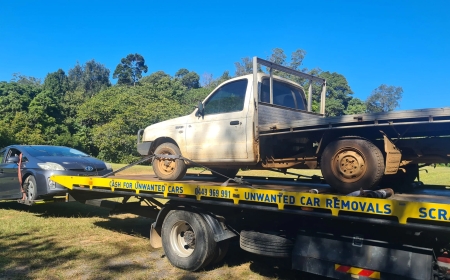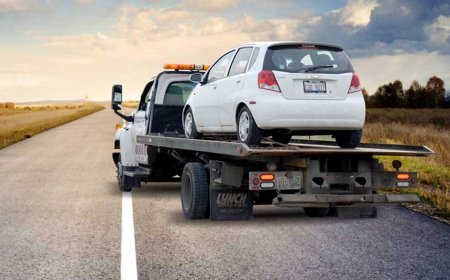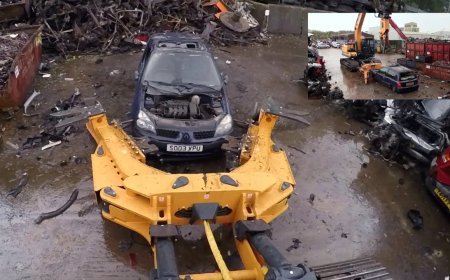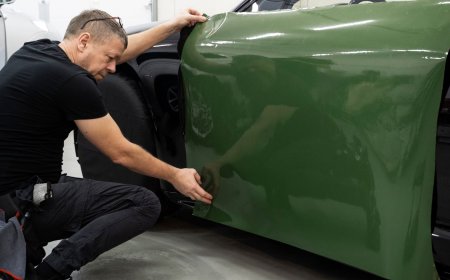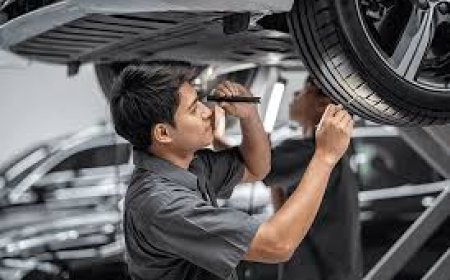More Than Metal: The Environmental Power of Scrapping Your Old Car
Learn how Unwanted Car Collection supports the recycling of old vehicles, reduces waste, and protects the environment by giving scrapped cars a new purpose.
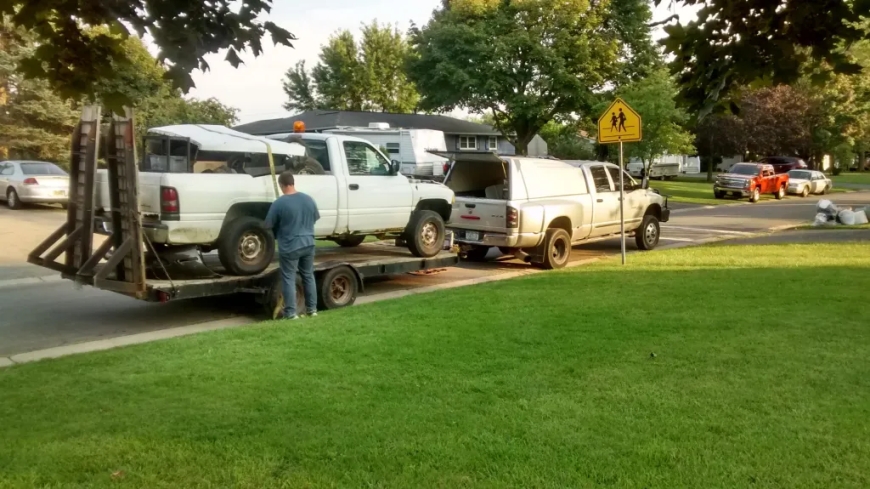
Cars are made to take us where we need to go, but like everything, they reach a point where they can no longer be used. Some stop running. Others are damaged beyond repair or simply become too old to meet road standards. When this happens, many people are unsure of what to do next. Some keep their old car sitting in a garage or backyard. Others send it off without knowing what actually happens to it.
Scrapping your old car does much more than clear space. It plays a key role in reducing waste and protecting the environment. This article looks at how the process of scrapping helps limit pollution, saves resources, and gives your old vehicle a new purpose.
What Happens to a Car at the End of Its Life?
Across Australia, thousands of vehicles are taken off the road each year. These are called end-of-life vehicles. The process of dealing with them is more detailed than most people think. After a car is collected, it is taken to a dismantling or salvage yard where it begins a new path.https://www.carremovalsydney.com.au/
The car does not just get thrown into a pile. It goes through a step-by-step process where parts are removed, fluids are drained, and materials are sorted. This helps prevent harm to the land and waterways and allows many parts to be reused.
Environmental Risks of Abandoning Old Cars
When an old car is left sitting for too long, it begins to break down in ways that are harmful. Fluids such as oil, fuel, brake fluid, and coolant can leak. These liquids can seep into soil and water and cause damage to plants, animals, and even local water supplies.
Batteries are another risk. They contain heavy metals and acids, which can leak over time and become a hazard to both the environment and public health. Tyres also pose a problem, as they do not break down in nature and can collect water, creating a space for mosquitoes to breed.
Scrapping your car the right way avoids these problems. It keeps harmful materials out of nature and ensures they are handled correctly.
How Scrapping Helps the Environment
Recycling Materials
Cars are made from a mix of metals like steel, aluminium, and copper, as well as plastics, rubber, and glass. When scrapped, these materials are sorted and recycled. According to the Australian Bureau of Statistics, more than 80% of a vehicles materials can be reused or recycled.
Steel, in particular, is important. It can be melted down and used to make construction beams, tools, or even new vehicles. Recycling steel saves energy and cuts down on the need for mining. One tonne of recycled steel saves around 1.5 tonnes of iron ore and reduces carbon emissions by hundreds of kilograms.
Reducing Waste in Landfills
Sending an old car to landfill is not only a waste of space, but it also puts strain on an already full system. By scrapping a car, much of the material is reused instead of buried. Less waste in landfill means less pollution and a cleaner future.
Supporting Part Reuse
Not all parts in an old car are useless. Many engines, gearboxes, doors, mirrors, and lights still work. These parts are removed and sold to people who need them. This helps other car owners avoid buying new parts, which takes more materials and energy to produce.
A Role in Climate Care
Scrapping an old car also helps lower carbon emissions. Building new cars and parts uses a lot of energy. By reusing parts and recycling metals, we lower the need for factories to produce everything from scratch. This cuts back on pollution released into the air, which contributes to climate change.
When fewer raw materials are taken from the earth, it also means less damage to natural areas. Mining and logging can ruin animal habitats and pollute rivers. Recycling helps reduce the need for these practices.
Making Room and Making Change
Old vehicles can take up space in driveways, garages, and sheds. Letting go of one may not be easy, but it often opens the way to cleaner, safer property and peace of mind. It also starts a process where your car gets a chance to help others and protect the planet.
Some vehicle owners take this step through a collection service that handles old or damaged cars. These services handle everything from pickup to removal. Many of them are focused on proper recycling and follow all environmental rules. One such service, focused on Unwanted Car Collection, helps remove old vehicles while making sure materials are reused correctly. This keeps roads clear of unused cars and helps turn waste into something useful.
Choosing the Right Time to Scrap
You may not know when the time has come to scrap your vehicle. Some signs include:
-
The engine no longer works and repair costs are too high
-
The vehicle has been written off after an accident
-
Rust or damage makes it unsafe to drive
-
It has been parked and unused for a long period
-
Parts are missing or worn out beyond repair
If any of these apply, it may be time to say goodbye to the vehicle and start the recycling process.
Facts About Car Recycling in Australia
-
Australia recycles around 500,000 vehicles each year
-
Over 90% of the metal from a scrapped car can be reused
-
One recycled tyre can save over 30 litres of oil in production costs
-
Recycling one car battery keeps 10 kilograms of lead and 2 litres of acid out of the soil
These numbers show that each vehicle can make a real difference when handled the right way.
Final Thought
An old car may seem like nothing more than a worn shell of what it once was. But inside it are parts and materials that can still serve a purpose. By scrapping it responsibly, you help the environment, free up space, and make room for others to benefit from what is left behind.























